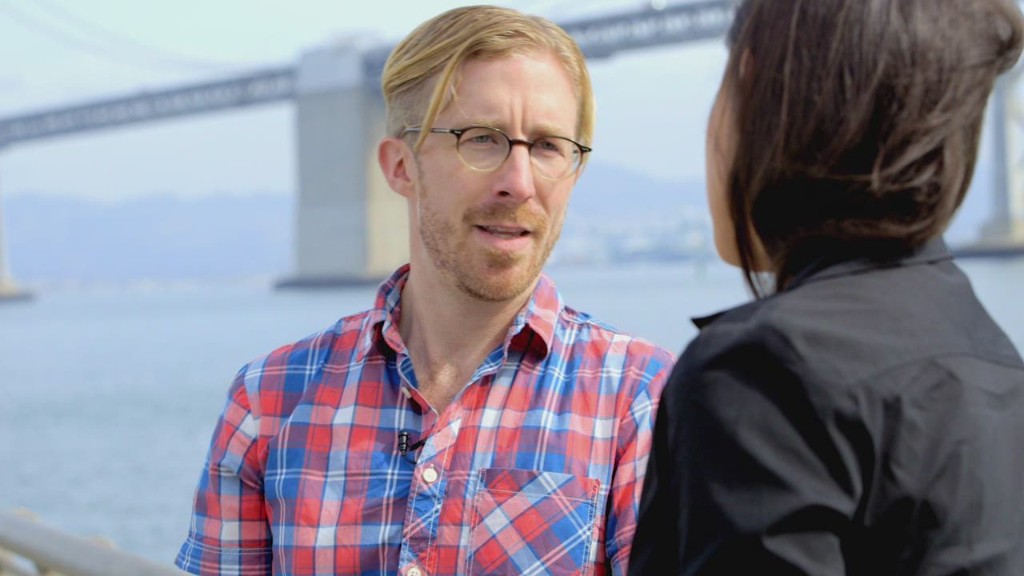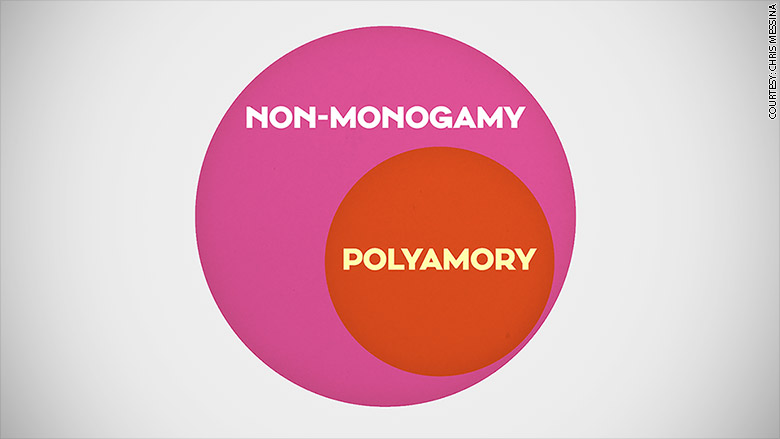
Like most of my generation, I grew up spoon fed monogamist fairy tales that pushed "happily ever after" endings as though achieving one was preordained.
It was like, once you found "the one" and stepped on to the relationship escalator, all the answers became clear -- so long as you kept your eyes on the prize and didn't stray (wait, what was the prize again?). You could spend your whole life living out this fantasy, blissfully ignorant that any other way might be possible, let alone desirable.
Nice enough, right?
But as a child of divorce and an aspiring designer-entrepreneur in Silicon Valley, I was suspicious of marriage. Out here, we're data-positive and solution-oriented and if your product (i.e. marriage) is failing for 50% of your customers, then you need to fix it or offer something better. So when I discovered polyamory and non-monogamy as I headed to Burning Man in 2013, I realized I'd stumbled onto another way.
Related: I have a fiancé, a girlfriend and two boyfriends
Let's get our terms straight. Polyamory means "many loves." It often applies to one or more people who are romantically involved with (wait for it) one or more partners. Non-monogamy, meanwhile, applies to everything that isn't monogamy -- including polyamory -- but you can be non-monogamous and not polyamorous. Here, I'll draw you a Venn diagram.

Personally, I'm in a monogamish relationship. We're committed to each other, but have a porous boundary around our relationship, meaning we've agreed that it's OK for either of us to express romantic feelings toward other people or to be physically intimate with other people, so long as we're honest and transparent about our intentions with one another.
These things don't diminish the integrity of our relationship. Rather, they deepen our understanding of each other's wants and desires, and give us the space to grow independently, without growing apart.
So why non-monogamy now?
Well, people haven't changed much, but their environment has.
Just think: Monogamy established itself thousands of years ago, when society was ruled by scarcity and resources and potential mates were in limited supply.
More: Sex, Drugs & Silicon Valley
We're now living in a period of great (though unequally distributed) abundance where our basic needs are sufficiently met, and reproduction is a choice. As a result, the reasons to be with a single mate for life are less urgent. And with the advent of connected mobile devices and the internet, we've entered into the era I've dubbed Big Dating.
Big Dating unbundles monogamy and sex. It offers to maximize episodes of intimacy while minimizing the risk of rejection or FOMO.
Today's most interesting apps (Snapchat, Secret, et al) are designed to support Big Dating, offering discreet, asynchronous, anonymish, non-exclusive communications. Multiplied against algorithms that optimize the pool of potential partners for connection (requiring no more than swipe left, swipe left, swipe right to operate), romantic partners are now more fungible than ever. Scary! Exciting!
As such, Big Dating precipitates the rising ambivalence toward commitment, as most millennials put off marriage indefinitely. In place of monogamous pairings, hookup culture flourishes and "open relationships" are commonplace. These are merely rational economic responses to excess inventory and changing expectations of romance. Viewed in this context, conventional monogamy is getting long in the tooth.
But fear not: just because a viable alternative to "happily ever after" is in ascendancy doesn't mean monogamy is irrelevant. To the contrary, it just means that there's now more than one option for building meaningful and satisfying relationships.
In 1990, Steve Jobs observed that a computer is like a bicycle for our minds. I love this image because the rider is in control of where she's going, and arrives at her destination efficiently thanks to human ingenuity.
This was the same year that Tim Berners-Lee brought the first web server online, when most people used PCs at work with Windows 3.0. To say much has changed would be an understatement.
Related: The business of the hashtag
So when we look back from 20 years in the future, I wonder if we might think of non-monogamy as a bicycle for our hearts. Similar to computers in 1990, non-monogamy is niche, with its cultural center in the Bay Area. Its potential is clear to many of us out here, especially in light of the challenges and opportunities raised by Big Dating.
Sure, it could be a decade or more before its relevance is obvious to the population at large, but had Steve Jobs told people that they'd be carrying around super computers in their pockets by 2015, they'd think he was nuts. Non-monogamy demands a similar kind of radical rethinking -- in how we approach our romantic relationships.
Considering all of the technological advances coming out of Silicon Valley -- from self-driving cars to augmented reality to real-time language translation -- I see room for improving how we approach modern relationships, and it just might look a lot like non-monogamy.
Known for inventing the hashtag and other open source advocacy, Chris Messina is a designer living in San Francisco. You can visit his website here.

